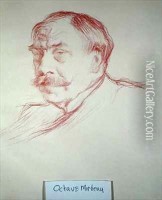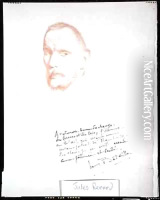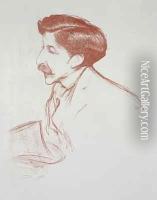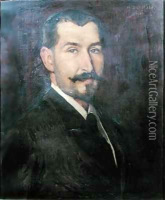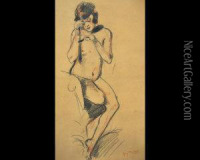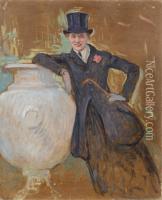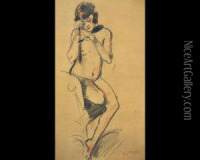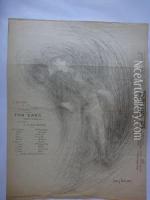Henry Bataille Paintings
Henry Bataille was a French playwright, poet, and painter born on April 4, 1872, in Nîmes, France. Despite being less well-known today, during his lifetime, Bataille was a prominent figure in the French cultural scene. He was associated with the Symbolist movement, which was characterized by its emphasis on emotion, mysticism, and the expression of metaphysical ideas through art.
Bataille's early work as a playwright garnered significant attention, with plays such as 'La Lépreuse' (The Leper Woman) and 'La Femme nue' (The Naked Woman) achieving success. His plays often dealt with themes of love, suffering, and the human condition, and they were notable for their poetic language and emotional intensity. Bataille's works were regularly performed at the prestigious Théâtre de l'Odéon in Paris.
In addition to his theatrical work, Bataille published several collections of poetry. His poetic style was marked by its lyricism and often reflected his interests in spirituality and the inner workings of the human psyche. Bataille's poetry contributed to the Symbolist movement's legacy by exploring the connection between the material world and the realm of ideas.
As a painter, Bataille was less prolific, but his artwork displayed a similar sensibility to his literary works, with a focus on symbolism and an exploration of emotional depths. His paintings were not as widely recognized as his plays and poetry during his lifetime.
Despite his successes, Bataille's life was not without personal turmoil. He experienced health issues and had a complex personal life, which included tumultuous relationships and financial struggles. Nevertheless, he continued to produce work that resonated with audiences and critics alike.
Henry Bataille's influence on the French cultural landscape of the early 20th century was significant, although his name may not be as familiar as some of his contemporaries. He passed away on March 2, 1922, in Rueil-Malmaison, leaving behind a body of work that continues to be of interest to scholars of French literature and theatre. His contributions to the Symbolist movement remain a part of the rich tapestry of French artistic heritage.
